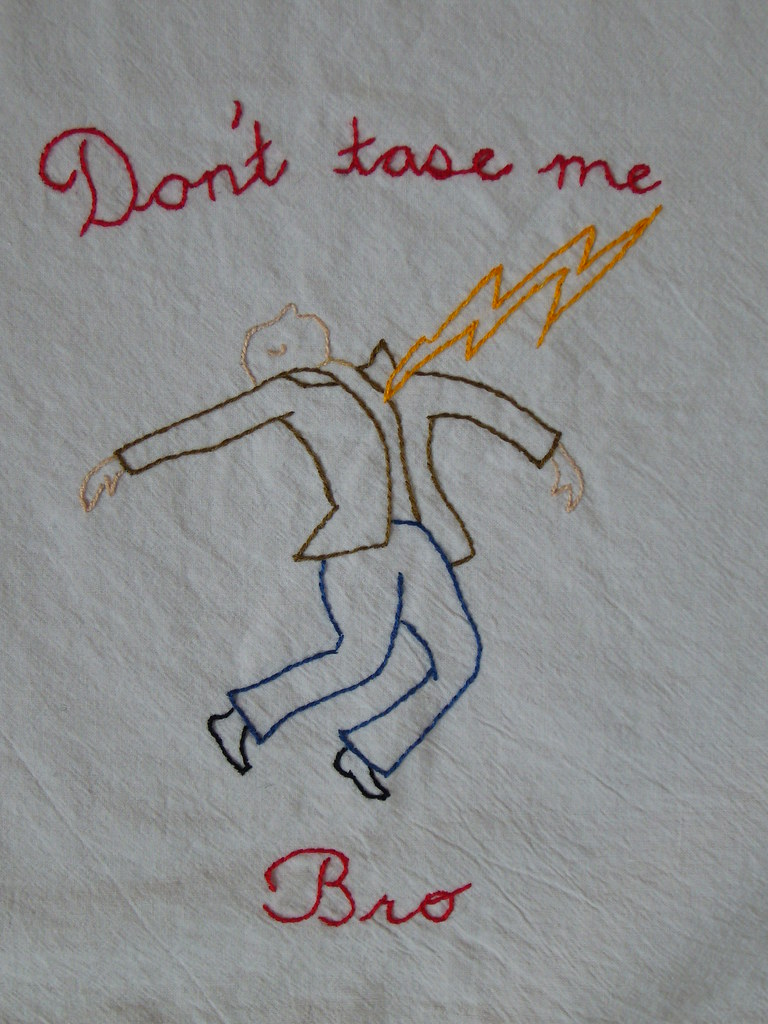Don’t Tase Me Bro

In a world where law enforcement tactics are under intense scrutiny, the use of electroshock weapons has sparked significant controversy and debate. One infamous phrase, “Don’t Tase me, bro,” uttered by a college student during a public forum in 2007, encapsulates the tension between individuals and authorities wielding such devices. However, the issues surrounding electroshock weapons extend far beyond this memorable moment, delving into questions of safety, ethics, and the appropriate use of force.
Electroshock weapons, commonly known as Tasers, stun guns, or conducted energy devices (CEDs), are designed to incapacitate individuals by delivering a high-voltage, low-amperage electric shock. Initially marketed as a less-lethal alternative to firearms, these devices have become ubiquitous in law enforcement arsenals worldwide. They are purportedly intended to subdue suspects without causing permanent harm, offering a means to resolve confrontations without resorting to lethal force.
However, the reality of electroshock weapon usage is far from straightforward. While proponents argue that these devices save lives by reducing the need for lethal force, critics highlight a myriad of concerns. One primary issue is the risk of injury or death associated with their use. Despite being labeled as “less-lethal,” electroshock weapons have been implicated in numerous fatalities and injuries, raising questions about their safety and effectiveness.
Moreover, the deployment of electroshock weapons is often subject to misuse or abuse by law enforcement officers. Instances of excessive force and unjustified tasting have led to public outrage and calls for greater accountability within police departments. Concerns about racial bias and discriminatory application of electroshock weapons have further fueled demands for reform and oversight.
Table of Contents
ToggleAssociated
In response to these concerns, some jurisdictions have implemented stricter regulations governing the use of electroshock weapons. This includes guidelines on when and how these devices should be deployed, as well as training requirements for law enforcement personnel. Additionally, there have been calls for improved technology to mitigate the risks associated with electroshock weapons, such as better targeting systems and medical monitoring capabilities.
Liberties
Beyond the realm of law enforcement, the use of electroshock weapons has implications for broader societal issues, including human rights and the ethics of violence. Advocates for police reform argue that the widespread adoption of electroshock weapons reflects a militarized approach to law enforcement, prioritizing control and coercion over community engagement and de-escalation tactics. Critics warn of the normalization of violence and the erosion of civil liberties in a society where the use of force is increasingly prevalent.
Conclusion
The phrase “Don’t Tase me, bro” serves as a poignant reminder of the complex dynamics surrounding the use of electroshock weapons. While these devices may offer a means to subdue suspects without resorting to lethal force, their deployment raises significant ethical, legal, and safety concerns. As society grapples with questions of accountability and justice within law enforcement, the debate over electroshock weapons remains as charged as ever.





